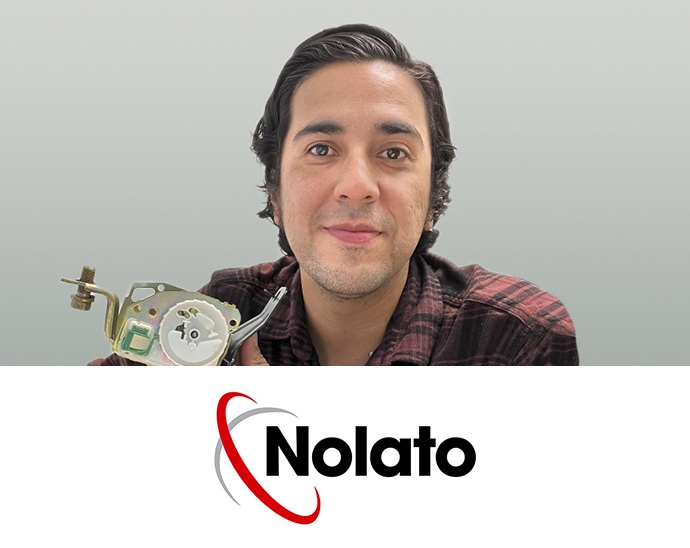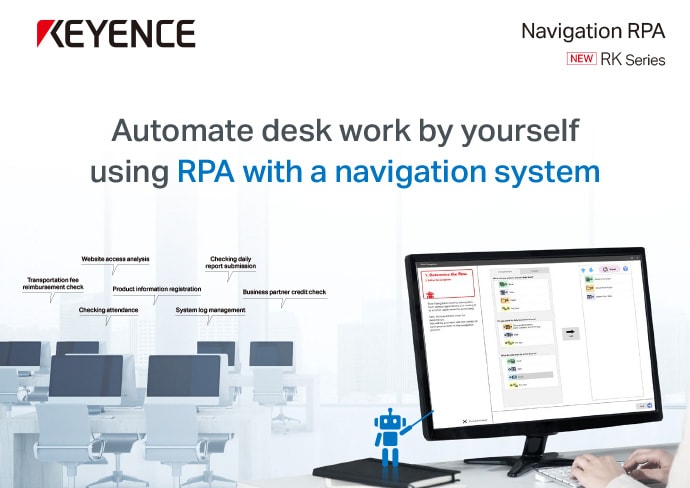Nolato GW Inc.

The successful implementation of RK has marked a significant turning point for Nolato GW, transitioning from traditional, paper-based processes to a modern, automated workflow.
Keeping in line with an overarching mentality for automation, Nolato GW was investigating ways to work more efficiently and began working with RK. We were given the opportunity to sit down with Lio Salas, a project engineer for Nolato GW, to discuss his experience with RK and the benefits and initiatives he’s seen since its implementation.
Nolato GW Inc.
Nolato GW, formerly GW Plastics, has been a leader in plastic injection molding around the world since their founding in 1955. After being acquired by Nolato in 2020, Nolato GW has been incorporated into the fold of a global entity that provides injection molding in thermoplastics and silicone to the healthcare, automotive, and consumer electronics industries. As Nolato GW’s business has expanded, there has been a developing need to streamline some processes to keep up with the growth.
Unfulfilled Need for Automation
Nolato GW has not been a stranger to KEYENCE in the past, having used several pieces of KEYENCE hardware to help streamline their production and manufacturing processes. With automation always top-of-mind, the executives of Nolato GW were eager to find a way to automate the manual, low-value work for project engineers, and the project engineers themselves were eager to offload that work from their plate. While the top and bottom levels of the company were hungry for automation, middle management struggled to find a solution that satisfied both parties. It can be difficult to find justification for grand enterprise-wide software solutions, and without a lot of visibility into the day-to-day tasks of the engineers it was hard to evaluate if a given tool would be a good fit for the team.
When KEYENCE announced that they had released a new computer automation software called RK, some interest began mounting due to the large amount of work still done on pen and paper for the operations team. While there was some concern that some within the company would be resistant to change, the operations manager proceeded to spread the word about RK and what it might be able to do for them. Some more interest came up from the Materials group, since they were stuck manually extracting a significant amount of information from an AS400 database which drained a lot of time and energy due to the tedious nature of the work.
It quickly became apparent that the RK tool was at least a solution worth investigating. While there was still some uncertainty about how exactly RK would fit into their processes, the desire to modernize work within the company and move away from the old-school pen-and-paper workstyle motivated them to move quickly. Equally helpful in building their confidence to move forward was the low operating cost of the tool; they viewed this opportunity as a low-risk, high-reward opportunity and decided to capitalize on it. It was at this point that Lio’s boss brought the situation to his attention, and asked if he thought this would be the silver bullet they had been looking for.
Lio recognized the potential and immediately began his onboarding, excited by the prospects of eliminating literal paperwork and eager to see how RK could improve his day-to-day work life.
Automation Goals and Expectations
As mentioned previously, prior to adopting RK there was some concern that employees within the company would be resistant to change. Due to the nature of many tasks within the Operations group being done on pen and paper, it was obvious that some processes would have to be fundamentally overhauled for RK to be useful.
In the past, project engineers would be responsible for a cycle count inventory task once a month. This involved printing out a stack of paper containing inventory information (which could be up to 3 inches thick), writing down the product numbers required for a project, then transcribing that information to an Excel file, then transcribing it again into AS400. This task is critical for Nolato GW to help them manage their cycle counts and inventory levels; it also took several hours to complete manually and was vulnerable to potential human error due to the high amount of data transcription.
Lio took the initiative to review this process and identify areas that could be cut out due to inefficiencies, and then using his knowledge of RK that he had gained from onboarding meetings began to understand how RK could fill the gaps of those inefficiencies. His goal was to eliminate all paper from that task and cut the overall length of the process down from several hours to a matter of minutes. A daunting task, but Lio remained confident that RK could do it; confidence that only increased as his knowledge of RK’s capabilities and functions grew.
This was Lio’s goal for RK as the end-user, but at the time of purchasing RK his boss and other middle management had no such goals in mind. They merely recognized a need for an automation solution and decided that RK provided the best offering to enable their employees to automate their own work at an approachable price.
Automation in Practice with RK
“…it depends a lot in the level of engagement you’re putting into it…”
While Lio was not the only user of RK initially after purchase, he has become the sole owner of RK within Nolato GW. Due to the old-school nature of the company, some of the original users did not feel very comfortable using a computer, so they defaulted to Lio to attend onboardings and learn RK to make the implementation more efficient. Lio told me, “You need some sort of [computer] skills or at least … be willing to learn,” stating that success with the tool “depends in the level of engagement you’re putting into it … it’s not going to work by itself.”
Less than six months later, Lio has completely eliminated paper from the cycle count inventory process he had originally set his sights on. On top of that, he has circled back to other employees within his team to see where else RK could be implemented, building scenarios for others and exposing his coworkers to the potential of the tool. As his knowledge of the different RK functions has grown, he has expanded to ask more and more questions about the processes of other Nolato GW employees to help identify areas RK could be implemented outside of his own team. He has been able to automate production reports for operations management to track operating costs, and track price variance for components to assist with setting pricing for customers.
Hindsight on RK
“…since the very first [onboarding] meeting… I understood the real potential of this…”
Looking back on his experience with RK, Lio told us, “…since the first [onboarding] meeting…I understood the real potential of this…” and told us that the support he received from our Customer Success team was “exceptional.” One aspect of Lio’s RK journey that contributed to his great success was his willingness to learn the tool.
Even though Lio is still learning the ins and outs of RK, his mentality of wanting to get the most out of the tool helped him stick with it despite a small learning curve. With patience and dedication, he continues to open new avenues for automation with each function he learns. He told us, “It’s very important first for me to understand what this software is capable of and … every time I discover a new function it just expand[s] my universe of what I can do with it.”
Looking Forward
Lio has been writing scenarios for his coworkers who thought they could benefit from RK but lacked the computer literacy to achieve that on their own. His proactive approach not only showcases the potential of RK but also fosters a culture of collaboration and learning within Nolato GW. As Lio continues to explore new applications for RK, he envisions a future where more employees are empowered to leverage the tool, further enhancing productivity and efficiency across the organization.
The successful implementation of RK has marked a significant turning point for Nolato GW, transitioning from traditional, paper-based processes to a modern, automated workflow. This shift has not only streamlined operations but has also instilled a forward-thinking mentality within the company. With a renewed focus on automation and efficiency, Nolato GW is well-positioned to embrace future challenges and opportunities, ensuring they remain a leader in the plastic injection molding industry. The journey towards modernization is just beginning, and the enthusiasm for continuous improvement is palpable among the team.

Navigation RPA RK Series
View Catalog
